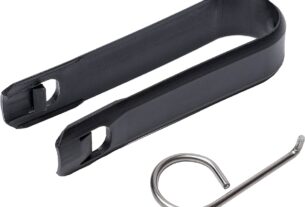A studding tool is a piece of equipment that enables you to insert studs into a variety of materials. It’s an essential tool for anyone who works with leather, denim, or other heavy-duty fabrics. In this guide, we’ll take a closer look at studding tools and help you choose the best one for your needs.
What is a Studding Tool?
A studding tool is a device that allows you to add studs to fabric or leather. It usually consists of two parts: a base and a punch. The base is used to hold the fabric in place while the punch is used to push the stud through the material.
There are several different types of studding tools available on the market today. Some are manual, while others are electric or pneumatic. The type of tool you choose will depend on your specific needs and budget.
Types of Studding Tools
Manual Studding Tool
A manual studding tool is operated by hand. It’s usually made from metal and features a small handle that you squeeze to create pressure. This pressure then pushes the stud through the fabric.
Manual studding tools are ideal for people who only need to insert a few studs at a time. They’re also great for those who want a simple, easy-to-use tool that doesn’t require any electricity or special skills.
Electric Studding Tool
An electric studding tool is powered by electricity and uses a motor to push the stud through the fabric. These types of tools are ideal for people who need to insert many studs at once, as they can work much faster than manual tools.
Electric studding tools can be more expensive than manual ones, but they’re worth it if you need to work quickly and efficiently.
Pneumatic Studding Tool
A pneumatic studding tool is similar to an electric one, but it’s powered by compressed air. These tools are ideal for people who work in commercial settings and need to insert a large number of studs quickly.
Pneumatic studding tools can be expensive, but they’re worth the investment if you need to work on a large scale.
Choosing the Right Studding Tool
When choosing a studding tool, there are several factors to consider. Here are some of the most important things to think about:
Type of Material
The type of material you’ll be working with will determine the type of studding tool you need. If you’re only working with soft fabrics like cotton or polyester, a manual tool may be sufficient. However, if you’re working with leather or denim, you’ll need a more heavy-duty tool.
Budget
Studding tools come at different price points, so it’s important to consider your budget when choosing one. Manual tools are generally the cheapest option, while electric and pneumatic tools can be more expensive.
Ease of Use
Some studding tools are easier to use than others. Manual tools are generally the simplest and require no special skills, while electric and pneumatic tools can take some practice to master.
Brand Reputation
It’s also important to consider the reputation of the brand when choosing a studding tool. Look for brands that have a good track record and positive customer reviews.
Tips for Using Your Studding Tool
Here are some tips for using your studding tool:
– Always read the instructions carefully before using your studding tool.
– Use the right size stud for your fabric or leather.
– Make sure your fabric is properly aligned before inserting the stud.
– Apply even pressure when pushing the stud through the fabric.
– Clean your studding tool regularly to ensure it works properly.
In Conclusion
A studding tool is an essential piece of equipment for anyone who works with fabric or leather. Whether you need a manual, electric, or pneumatic tool, there are plenty of options available on the market today.
By considering your specific needs and budget, you can choose the right studding tool for your project. Remember to follow the tips above to ensure that you use your studding tool safely and effectively.
Wiki Reference: https://en.wikipedia.org/wiki/Stud_(fastener)




